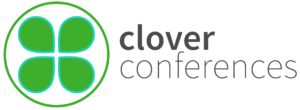Needs Assessment: Learners Data Source
What purpose does this serve?
A needs assessment (CPME 720 #2.0) technically should be done once a year and its purpose is to take the temperature of the industry to find out what educational gaps exist between what is being taught in programs and what is being experienced in the practice.
The CPME guidelines outline two different source areas. You pick at least one from each category, summarize the information into a report and cite your sources.
One of the types of sources listed is the post-meeting evaluations. Definitely include this one. This is a great time to pull out all your post-meeting evaluation surveys from your recent meetings, read through each one, and graph the results. (If you use a survey company, they probably provide you with a reporting feature that will do this). For example, if one of your questions is:
Was there a lecture that stood out to you, that you really enjoyed?
Graph the answers by making a list of all your lecture topics and make tally marks for each one the attendees noted. At the end, sum it all up and now you can see clearly what lectures and topics stood out.
If a lecture stood out, it’s either because the speaker was engaging, or because the topic was something they don’t hear at every meeting. They learned something new, had an “a-ha” moment, and they went home with a new idea from that lecture. So now you know the type of lecture content to bring back in the future. Give the people what they want!
Do the same thing for your speakers.
Which speakers stood out to you?
Make a graph and tally each one. Bring the stand out speakers back to lecture on a different topic or maybe the same topic but different aspects of it.
Go through all the questions on all the evaluations, create graphs or charts for all of it and now you can really see what your attendees enjoyed and what they didn’t.
One of the questions I think should always be included on an evaluation is:
What were we missing? What did you hope to learn that wasn’t presented? What do you want to know more about that we can include in the future?
The needs assessment is required at least annually, but really if you have multiple meetings throughout the year, you may want to do it more frequently to make sure your meeting stays relevant and addresses the needs of the attendees. Especially during a year like 2020, where the climate of practices and what they were doing in January/February 2020 is completely different from what they are doing and experiencing in July/August of 2020. So, if you are holding a conference in late 2020 or early 2021, your content is probably completely different than the content you presented in the 2019 meeting. Because your meeting should be designed to meet the needs of the industry.
Anytime you feel lost or overwhelmed by creating the needs assessment, (How long does this have to be? Is this really necessary?) go back to the mission of the needs assessment which is:
To take the temperature of the industry, find out where the educational gaps are between what people are being taught and what they need to know in their practice.
Then, create your meeting agenda to fill those gaps.
If you don’t take the needs assessment seriously with the proper amount of time and effort, then your future meetings will suffer. You won’t know that it’s not what people need, that it’s not serving a purpose, and that it’s not moving the industry forward.
So, the needs assessment, even though it is a formality, it really serves to improve your meeting every year, if you do it properly.
If you have no idea what a needs assessment is, or have never done one before, it’s probably because you have never been “under the microscope” with CPME or on probation; because as soon as you are, one of the first things they request is, “Please provide us with a copy of your most recent needs assessment.”
If you don’t have one, or it’s like your smoke detector batteries and you think you just did one six months ago but really its been five years, then you’re scrambling to put it together and it’s frustrating and the end result doesn’t serve the purpose it’s intended to serve. You basically just threw something together to check a box.
Build a schedule and a process for the needs assessment into your yearly standard operating procedures and make it easy on yourself.
The information provided by Clover Conferences, LLC or Ann Dosen on www.cloverconferences.com or via email is for general informational purposes only. All information is provided in good faith, however, we make no representation or warranty of any kind, express or implied, regarding the accuracy, adequacy, validity, reliability, availability or completeness of any information we provide. Basically, we are not responsible if you take our advice and it doesn’t go well for you.


